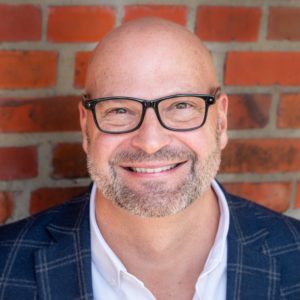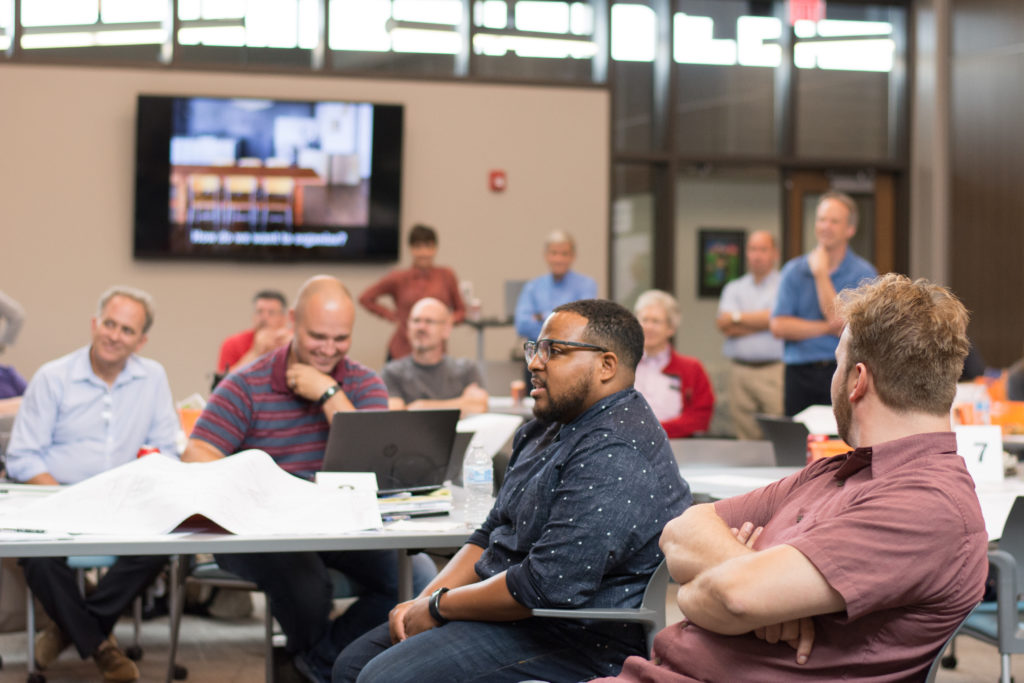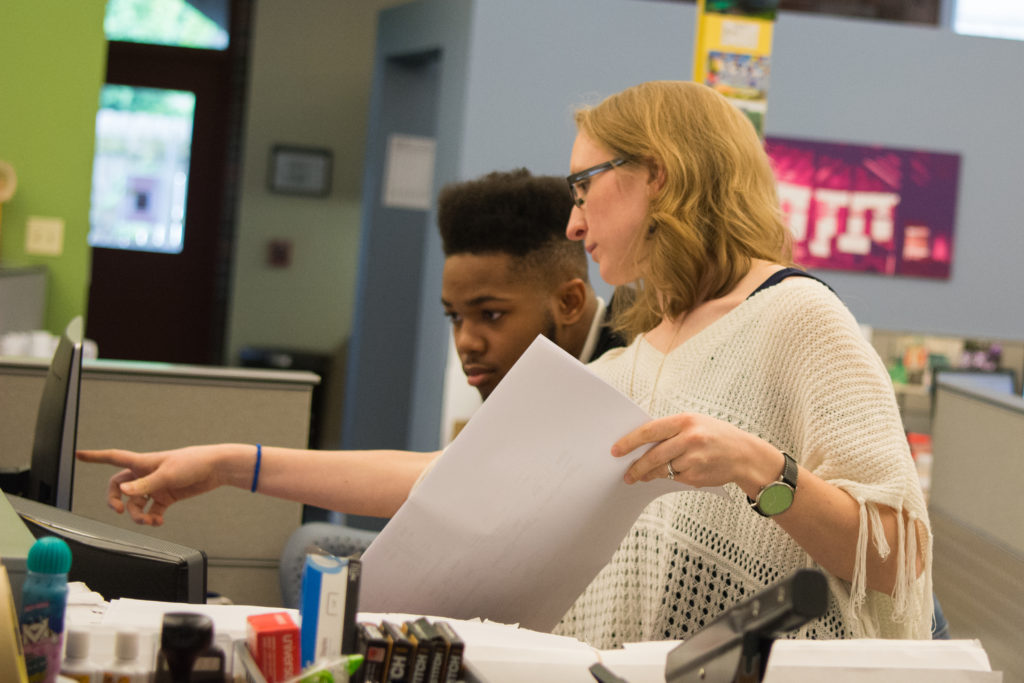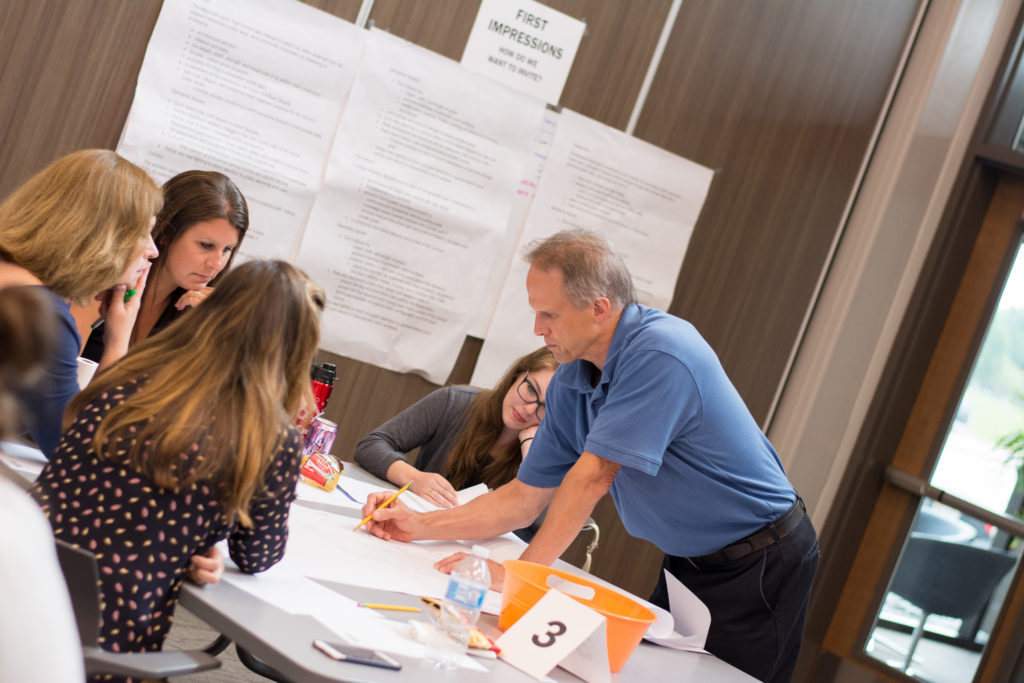In architecture, design collaboration is a necessity for a project’s outcome. This is especially important when designing buildings such as a school or municipal office. As in virtually every other creative endeavor, combining deep technical experience with a process that identifies challenges and incorporates feedback produces the most successful results.
Chris Smith, the president at ThenDesign Architecture, started in 1998 as a 28-year-old intern. Having come from a large, international design firm, he was drawn to the idea that through thoughtful, insightful and selfless design, architects could improve the lives of students by creating better spaces.
TDA: Why are you passionate about designing educational architecture?
Chris Smith: Architecture can be a very self-focused, egotistical profession. Since there’s artistry to it, the artist’s name rides along with the project and often times is the name of the firm itself. What attracted me to TDA from the beginning was that it wasn’t named after the leadership of the firm, but rather a concept that we were in the “thinking business,” not simply the “drawing business.” So now that I am the president of the company, not having my name on the door continues the legacy for what drew me here in the first place.
Our focus is the design of publicly owned facilities such as schools, municipal buildings, and recreation centers. We’re not charged with designing for one person; we’re tasked with designing for the greater public good. That involves collaborating with the community, with students, with teachers, with parents and the community at large, groups you may not think have a voice in architectural design. Our “client” is ultimately the many generations of students who will learn and thrive in these spaces.
I find that I am most gratified when I can help others succeed. Creating a lasting piece of architecture that improves student’s lives, impacting more people than we ever could touch physically. So that just builds on our core value of always seeking ways to help others succeed.
How does TDA encourage a collaborative design process?
Chris Smith: The design process at TDA is unique in our industry. In a typical firm, often an architect or designer singularly authors the design. However, we believe collaborative design produces a better product for our publicly-owned facilities. We approach our projects as a design team, with several architects working together. This diversity of perspective is what makes our design solutions strong. Even though there is a project manager who leads the group, the end result is never a single person’s idea.
We also engage with our clients and school communities throughout the project and really try to identify design challenges and opportunities early in the project. It’s that “problem-seeking” curiosity which drives our design process. Collaboration is a necessity and identifying where we can improve a district’s curriculum and student engagement through architectural design is the goal of this process. Sometimes that engagement takes a long time. However, it helps us better understand the district while simultaneously improving our designs.
Our philosophy is when your building is finished, you will have authored the design. So that’s why we don’t have our names on our doors or even titles on our business cards. Only through collaborative and selfless design can we truly create spaces for the greater good.
How do educators and communities participate in our collaborative design process?
Chris Smith: If you talk to any teacher or educator you find out that 98% of their job is finished if they can inspire a child to learn. If we can help in any small way by creating an inspirational space, something that makes a teacher’s job easier or a student’s job more fun, then we’re helping our teachers achieve their mission.
There is a symbiotic relationship that inherently exists between a school district and their community. The community trusts the district to educate their children in a safe, effective, and efficient manner. The district trusts the community to provide the funding and support to do so. In the design process, we believe this trust between the school district and the community plays a large role in a successful project. It is incumbent upon the community to trust the professional educators to drive the layout of the spaces within the building. Likewise, the district must trust the community to provide valuable feedback on the exterior aesthetics of the building–how the site could best integrate with pedestrians, bicyclists and motor vehicles, location of playgrounds and ball fields. Only through the recognition, promotion and incorporation of this trust can a project involve all stakeholders in the design of a new school facility.
What is an example of an unlikely design idea and where did it come from?
Chris Smith: We believe that good ideas can come from anywhere and anybody. So when we conduct “in-house charrettes” and collaborative design sessions, we don’t limit these to just the architects and administrators. Anybody is welcome to participate. We’ve had the strangest ideas come from the coolest places.
Some years back, we were investigating school security [the potential of armed intruders] and we were on the forefront of designing security guidelines for school buildings in Ohio. During one of our Educational Visioning Sessions, we received a brilliant idea from a young student. The student came up with an idea to color code the building so that if there was an intruder in their elementary school, they could call the authorities and state, “The bad person is in the red part of the building and moving into the blue part of the building.” That led to some very intuitive design standards that are still employed today. That wonderful idea came from a third-grade student. So, the educational design process surrounding school buildings is a very collaborative process, not only between our professional architects and designers, but amongst all stakeholders.
TDA, as a group of creative professionals, work to design and build the “next generation” educational and municipal facilities that are environmentally friendly, contextually rooted and inspiring to inhabit. Understanding that collaboration is a necessity, we look forward to working together with school districts, educators, and communities to design the educational facilities of the future.
Let’s work together to make education better. Interested in speaking with us? Get in touch!

Chris Smith
President
Get our newsletter with insights, events and tips.
Recent Posts:
Mentor’s CARES House: Autistic Education Comes Home
Perry High School Unveils a State-of-the-Art Welding Lab
ThenDesign Architecture Celebrated its 35th Anniversary
Capital Improvement Plans Work

Chris Smith
Chris Smith serves as President of ThenDesign Architecture, providing strategic direction for the firm, executive oversight on projects and fostering culture for staff. For over 20 years, he’s cultivated a passion for educational design. He participated in the 2000 and 2004 US Olympic Trials, serves as a coach and mentor for athletes and is dedicated to lifelong learning.


